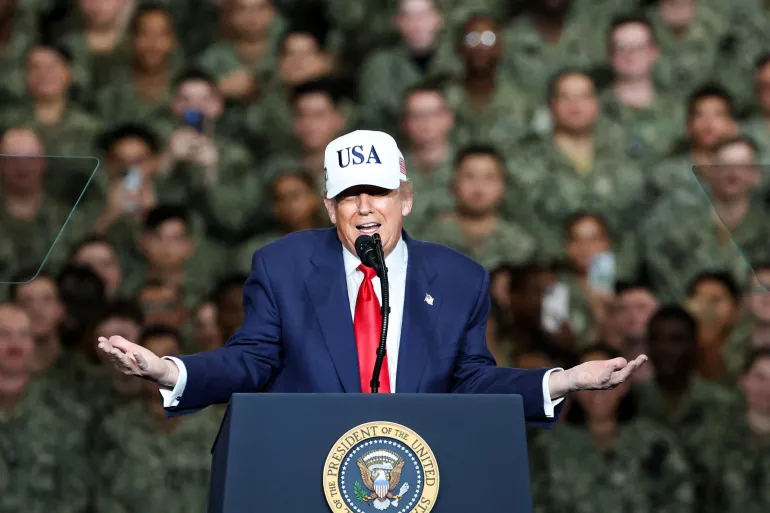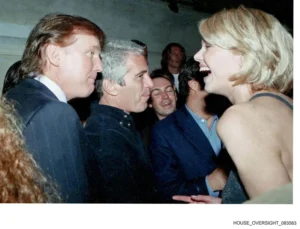‘Trump 2028’: Could the US president really go for a third term?

The question of a third presidential term often arises. It sparks intense debate in the U.S. political landscape. However, the answer is clearly defined. The U.S. Constitution sets a firm limit. This limit prevents presidents from serving indefinitely. Specifically, the 22nd Amendment governs this issue. It was ratified in 1951. This law changed the political future of the country. Therefore, understanding this amendment is crucial. It defines the reality of presidential power. This article explores the legal foundation of term limits. It looks at the history that created this rule. It also examines the few scenarios where a president might theoretically serve more than eight years. Trump 2028
1. The Legal Wall: Decoding the 22nd Amendment Trump 2028
The U.S. Constitution did not originally limit presidential terms. Indeed, George Washington set a strong precedent. He voluntarily stepped down after two terms. Consequently, many early presidents followed this tradition. They honored the two-term limit. However, one president broke this rule. This led to a major constitutional change.
The Text of the Law
The 22nd Amendment contains two main parts. First and foremost, it directly addresses elected terms. It states that no person can be elected president more than twice. This means two four-year terms. Therefore, a total of eight years is the maximum elected service.
The Vice Presidential Clause
The second part is more complex. It covers presidents who take office mid-term. This happens if a sitting president dies or resigns. Specifically, a vice president takes over the unexpired term. Thus, the 22nd Amendment has a clause for this situation. If a vice president serves more than two years of the predecessor’s term, they can only be elected president one time afterward. Conversely, if they serve less than two years, they can still be elected twice. They can serve for a total of almost ten years in this unique scenario.
- Rule Summary: Elected terms are limited to two. Therefore, presidents cannot directly seek a third election. In addition, special rules apply to fill-in terms. These rules determine the total possible service time.
The Historical Context: Breaking Washington’s Precedent Trump 2028
The two-term tradition was followed for over 140 years. For instance, Thomas Jefferson and others believed it was vital. They argued that long service resembled a monarchy. They wanted to ensure a democratic transfer of power. Consequently, the tradition was honored by many presidents.
Franklin D. Roosevelt’s Fourth Term
This tradition ended in the 1940s. Specifically, Franklin D. Roosevelt (FDR) ran for a third term in 1940. He won that election easily. Furthermore, he ran again in 1944. He also won a fourth term. Therefore, he is the only president to serve more than two full terms. The country was facing exceptional circumstances. The Great Depression and World War II were the issues. Many felt that leadership continuity was necessary.
The Immediate Response Trump 2028
FDR died soon after his fourth inauguration. However, his multiple terms created a political backlash. Many lawmakers feared a powerful executive branch. They worried about the future stability of the democracy. Thus, Congress quickly acted to formalize the term limit. The 22nd Amendment was proposed in 1947. It was ratified by the states in 1951. Ultimately, this codified George Washington’s original choice into law. It officially closed the door on the possibility of a third elected term.
- Lesson Learned: Roosevelt’s unique situation showed a loophole. Therefore, the American people amended the Constitution. They wanted to prevent any future president from dominating the office.
The Modern Reality for Current and Former Presidents
The 22nd Amendment remains a strong, unassailable part of the Constitution. Consequently, for any current or former two-term president, a third term is impossible. They cannot appear on the ballot.
The Situation for a Hypothetical President
Consider a president who has already won two full terms. They cannot run again in 2028. This is the simple reality of the law. Similarly, they cannot run in 2032 or any year after. The amendment prohibits a third election victory. Therefore, all political discussion of a third term must acknowledge this legal barrier.
The Power of the Amendment Trump 2028
Amending the Constitution is very difficult. It requires a two-thirds vote in both houses of Congress. Then, it requires ratification by three-fourths of the states. In fact, repealing the 22nd Amendment has been attempted. These attempts always fail quickly. There is no popular support for eliminating term limits. Thus, the law is stable and effective. It keeps the executive power in check.
- Legal Standing: The U.S. Supreme Court has never seriously questioned the 22nd Amendment. Therefore, any discussion of a third term must begin with repealing the amendment. This is an extremely unlikely political event.
Theoretical Loopholes: Exploring the Hypotheticals Trump 2028
Constitutional lawyers sometimes explore theoretical scenarios. These scenarios involve the 22nd Amendment. They look for possible, though improbable, exceptions to the rules.
Running for Vice President
Could a former two-term president run for Vice President? This is a popular question. Specifically, the Constitution only sets election limits for the President. It does not limit terms for the Vice President. However, the 12th Amendment is also relevant. It sets the qualifications for the Vice President. The Vice President must be eligible to be President.
The Supreme Court has not ruled on this exact situation. Yet, most legal experts agree on one point. A former two-term president could be elected Vice President. But, they could not assume the Presidency. If the elected President became incapacitated, a serious legal crisis would occur. Many believe the former president would be barred from ascending to the top job. The 22nd Amendment’s spirit is to prevent an individual from serving as President too long.
The Impeachment Scenario
Consider a president who is removed from office. This removal could happen early in their second term. Then, they might argue the 22nd Amendment no longer applies. The argument would be that they did not complete the full term. However, the amendment’s language is focused on being elected. It does not focus solely on completion of the service. This scenario remains a complex, unresolved legal debate. It highlights the difficulty of writing perfect laws.
- Legal Consensus: Most experts agree that the spirit of the law prohibits extra service. Therefore, loopholes are extremely narrow. They are likely to fail if tested in court.
The Role of Precedent and Political Culture Trump 2028
The strength of the two-term limit is not just legal. It is deeply cultural. The American political system values the peaceful transfer of power. It strongly rejects the concept of a “president-for-life.”
Protecting Democracy
The 22nd Amendment helps protect the democracy. It forces new leadership. It brings fresh ideas. Furthermore, it prevents an accumulation of excessive personal power. This power could corrupt the system. It could hurt the national interest. Consequently, the amendment is seen as a guardrail. It prevents the country from drifting toward authoritarianism.
The Public View
The American public generally supports term limits. Polls consistently show high public backing for the 22nd Amendment. Thus, political parties are unlikely to seriously pursue a repeal. Any politician proposing the change would face massive opposition. This opposition would come from voters. It would also come from opposing political leaders. Trump 2028
Read More Articles Click Here. Read Previous Article Click Here.



